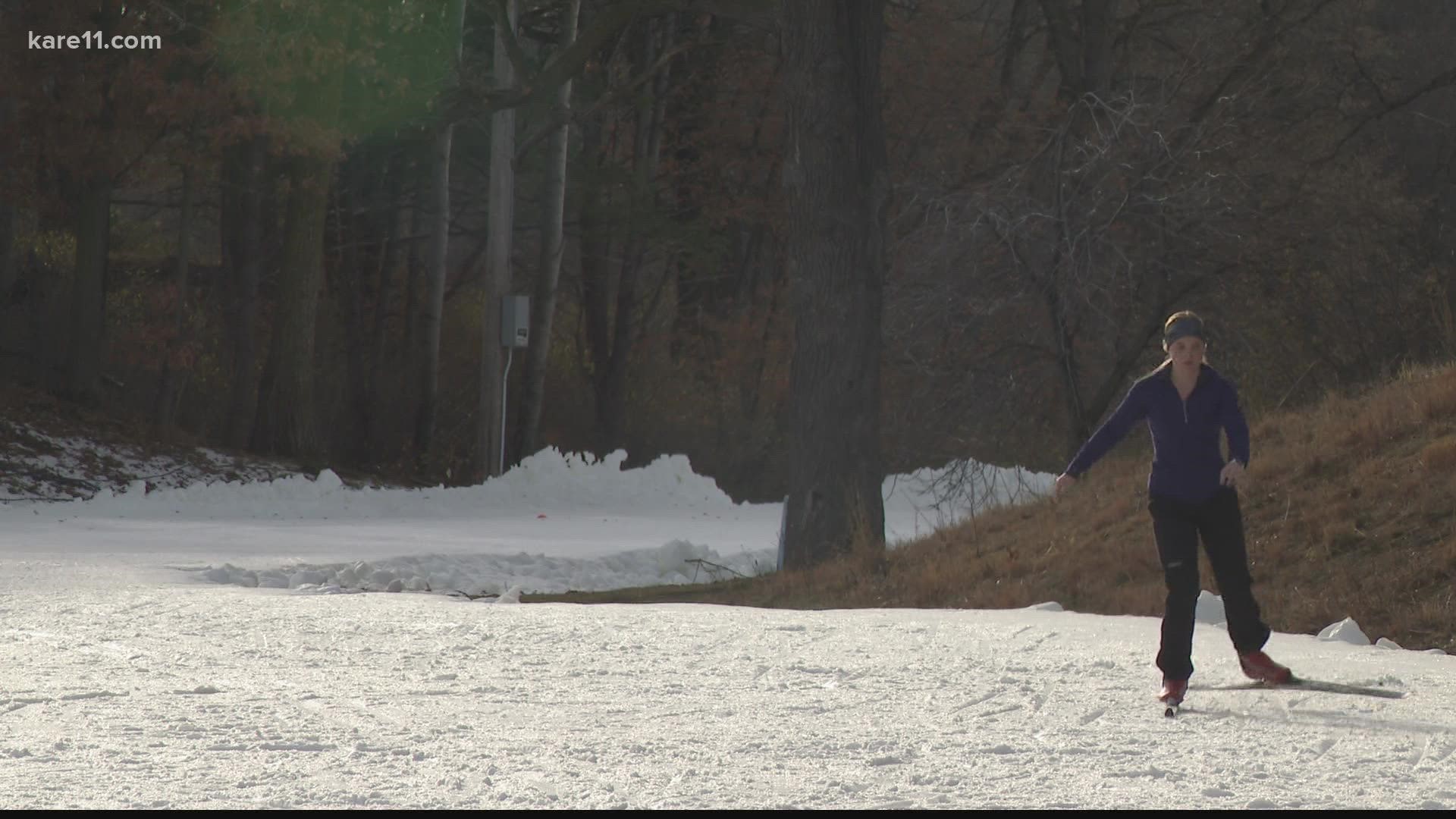MINNEAPOLIS — If the start of meteorological winter feels as overblown as an inflatable snowman, it's likely because fans of Minnesota's coldest season have been spoiled recently.
By the time winter officially started in 2020, Minnesota had already seen 18 inches of snowfall, and cross country ski trails in Minneapolis had been open for more than a month.
KARE11 reporter Kent Erdahl spoke to National Weather Service meteorologist Tyler Hasenstein about what the warm start might mean for the rest of winter.
Kent Erdahl: "We're outside without jackets, standing on green grass. Is this unexpected?"
Tyler Hasenstein: "Not entirely unexpected. We'll experience this type of winter every three to five years. We'll have pretty much no snow leading up to early December."
Erdahl: "What are you watching for, in terms of trends, if this is one of those years?"
Hasenstein: "The main thing we're watching is some of the larger-scale patterns. Since this is the second consecutive La Niña year — going back to previous data — eight out of the last 10 second La Niña years have actually ended up colder than normal with a little bit more snow for us. So enjoy this while we have it."
Erdahl: "How long should we plan to enjoy it?"
Hasenstein: "At least for the next couple of weeks. We're really not looking at any strong snow chances. At least as far as what we can see, the climate outlooks we're really looking at, we might end up a little bit warmer than normal for the first half of December."
The warm, dry trend is happening across the country, and Hasenstein says it's harder to enjoy elsewhere. In Denver, Colorado, December is beginning without any snowfall for the first time in history, and there is still no snow in sight for the near future.
"Really the only places across the country that have really good snow pack are up in the mountains, where you would kind of expect to see those large snows already," he said.
While that's sparking concerns about wildfires and climate change out west, in Minnesota, Hasenstein says it's a different conversation.
"The impacts of climate change, when it comes to Minnesota winters, it's not that exaggerated compared to other places," he said. "The impacts for us might just be a trend towards slightly stronger systems that drop more snow at one time versus seeing a widespread pattern of, we're always getting more snow, we're always being colder."
That means there's more time to recover from dry weather, even after a summer plagued by drought.
"As far as the winter goes, even though we're kind of drier — we're not seeing the snow right now — it only amounts for about 10 percent of our total moisture every year," Hasenstein said. "So we don't expect those drought impacts kind of exacerbating at all compared to what we saw during the summer, and hopefully, if we get some precipitation in spring, it will be like the drought last year was mitigated completely."
In other words, at a time when there are plenty of things to worry about, he says don't sweat the snow stuff.
"We do have a lot of winter left," Hasanstein said. "It's only the first day after all."

